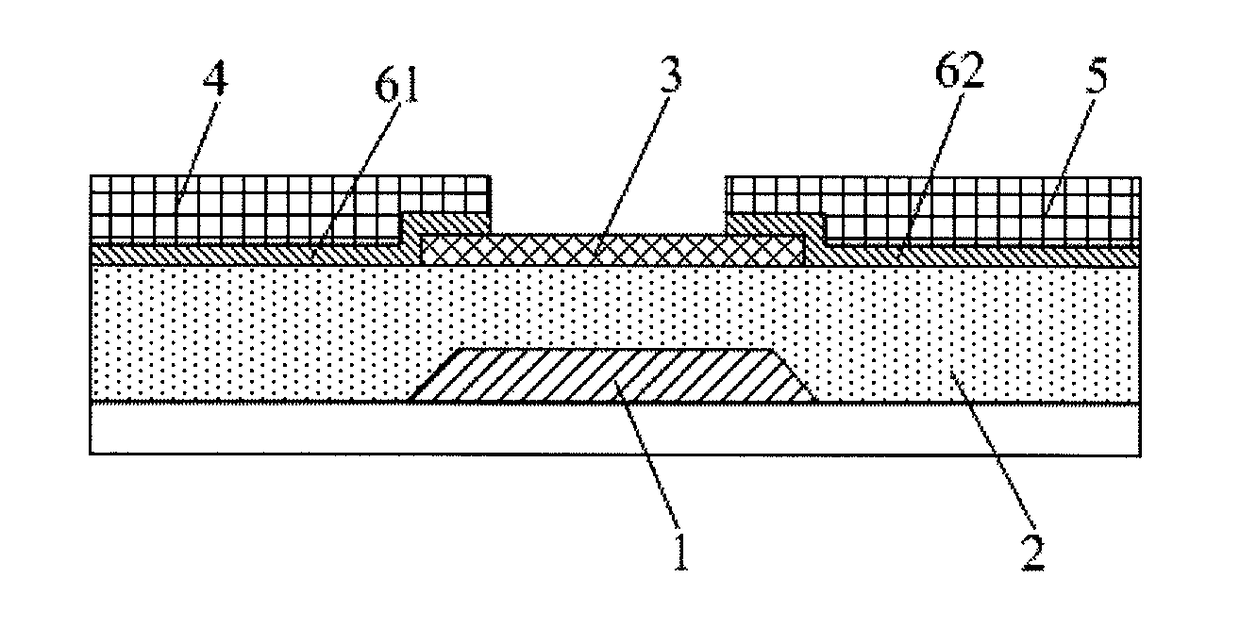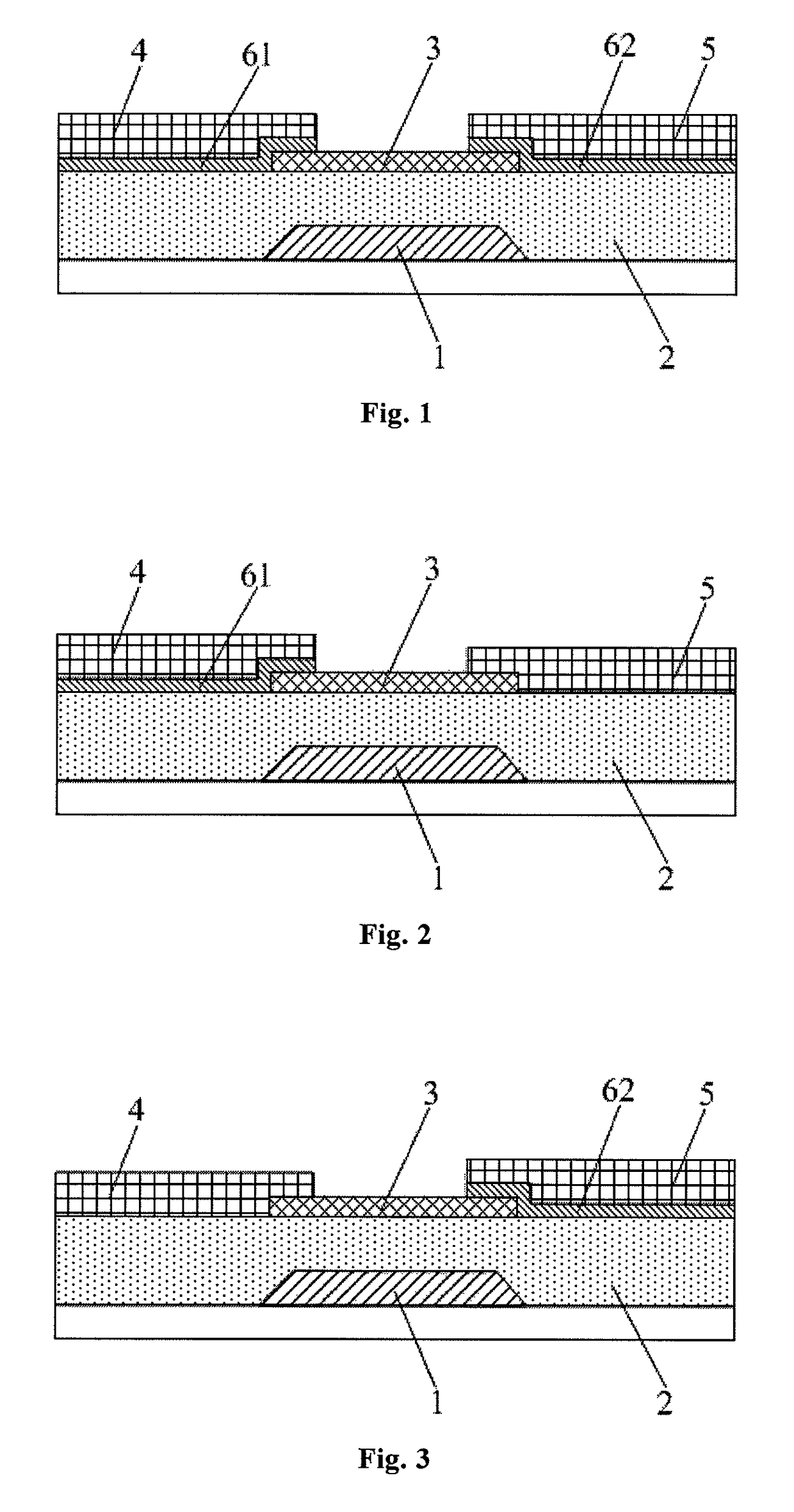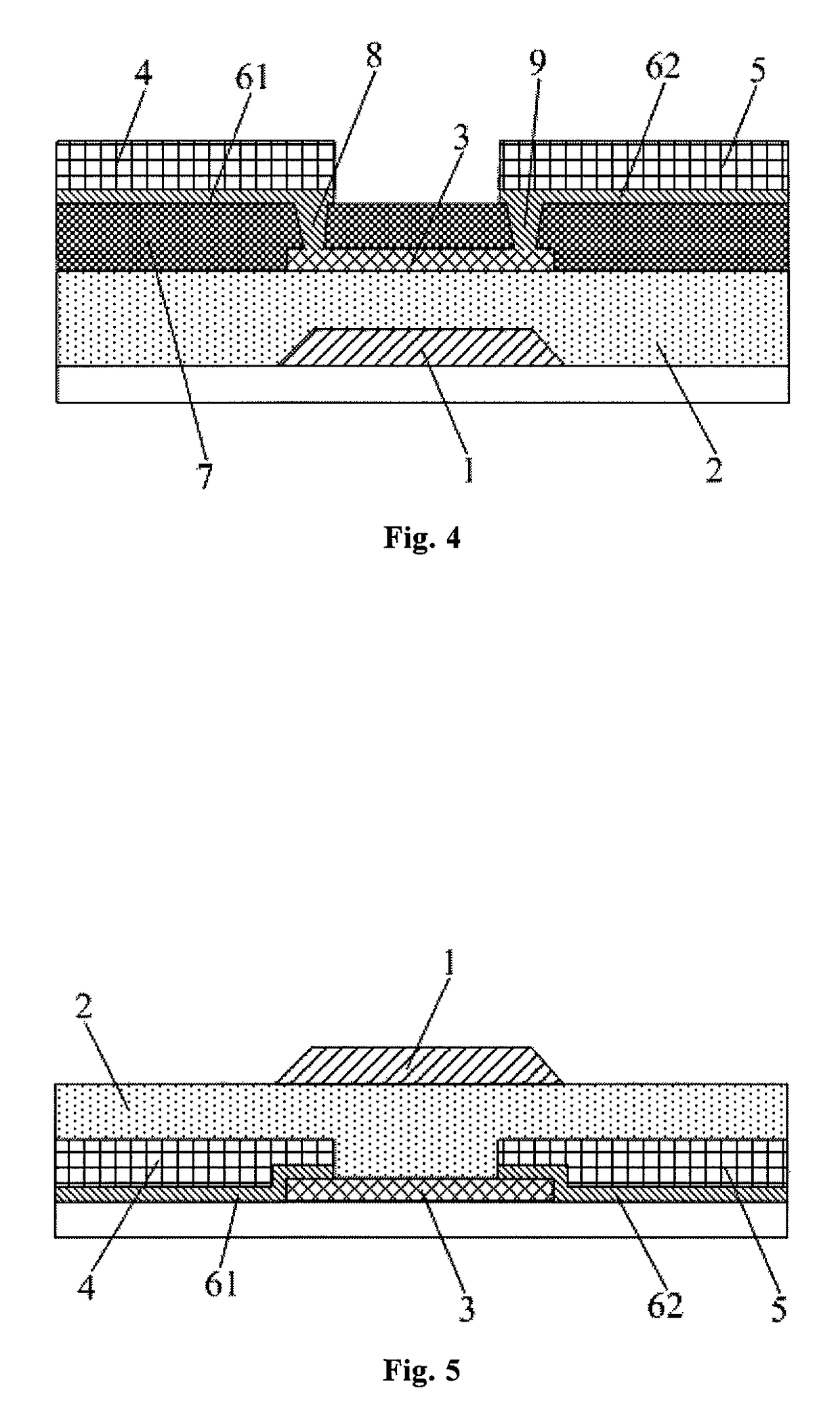Thin film transistor, array substrate and display device
a thin film transistor and array substrate technology, applied in the field of display technology, can solve the problems of large subthreshold swing of tft, serious impact on and reduce the oxygen vacancies in the active layer, and improve the operation capacity of tft. , the effect of increasing the transmission rate of carriers
- Summary
- Abstract
- Description
- Claims
- Application Information
AI Technical Summary
Benefits of technology
Problems solved by technology
Method used
Image
Examples
embodiment 1
[0027]The present embodiment provides a thin film transistor which, as shown in FIG. 1, comprises a gate 1, a gate insulation layer 2, an active layer 3, a source 4 and a drain 5. The gate insulation layer 2 is disposed between the gate 1 and the active layer 3 so as to insulate the gate 1 from the active layer 3. The source 4 and the drain 5 are disposed at two ends of the active layer 3, respectively. The active layer 3 is formed by using material of metallic nitrogen-oxide. The thin film transistor further comprises a conductive oxygen vacancy reducing layer for decreasing oxygen vacancies in the active layer 3. In this embodiment, the oxygen vacancy reducing layer is disposed between the active layer 3 and the source 4, and between the active layer 3 and the drain 5.
[0028]The material of metallic nitrogen-oxide may be zinc gallium oxynitride, zinc indium oxynitride, zinc aluminum oxynitride, zinc oxynitride (ZnON), and the like.
[0029]In this embodiment, the oxygen vacancy reduci...
embodiment 2
[0037]The present embodiment provides a thin film transistor, which is different from that of embodiment 1 in that the oxygen vacancy reducing layer in this embodiment comprises only the first reducing part 61 (as shown in FIG. 2) or only the second reducing part 62 (as shown in FIG. 3).
[0038]Accordingly, when preparing the thin film transistor shown in FIG. 2, a pattern including the first reducing part 61 is formed by a single patterning process at first, and then a pattern including the source 4 and the drain 5 is formed by another single patterning process. When preparing the thin film transistor shown in FIG. 3, a pattern including the second reducing part 62 is formed by a single patterning process at first, and then a pattern including the source 4 and the drain 5 is formed by another single patterning process.
[0039]Except that the thin film transistor of this embodiment is provided with the oxygen vacancy reducing layer, other structures as well as materials for components i...
embodiment 3
[0041]The present embodiment provides a thin film transistor which is different from those in Embodiments 1 and 2 in that, as shown in FIG. 4, the thin film transistor further comprises a etch stopping layer 7 which is disposed between the active layer 3 and the source 4 and drain 5. The oxygen vacancy reducing layer is located at a side of the etch stopping layer 7 away from the active layer 3. A first via 8 is opened within a region of the etch stopping layer 7 in which the first reducing part 61 is located so that the first reducing part 61 is contacted with the active layer 3 through the first via 8; and a second via 9 is opened within a region of the etch stopping layer 7 in which the second reducing part 62 is located so that the second reducing part 62 is contacted with the active layer 3 through the second via 9. Although only one first via 8 and only one second via 9 are shown in FIG. 4, it should be understood that a plurality of the first vias 8 and a plurality of the sec...
PUM
 Login to View More
Login to View More Abstract
Description
Claims
Application Information
 Login to View More
Login to View More - R&D
- Intellectual Property
- Life Sciences
- Materials
- Tech Scout
- Unparalleled Data Quality
- Higher Quality Content
- 60% Fewer Hallucinations
Browse by: Latest US Patents, China's latest patents, Technical Efficacy Thesaurus, Application Domain, Technology Topic, Popular Technical Reports.
© 2025 PatSnap. All rights reserved.Legal|Privacy policy|Modern Slavery Act Transparency Statement|Sitemap|About US| Contact US: help@patsnap.com



